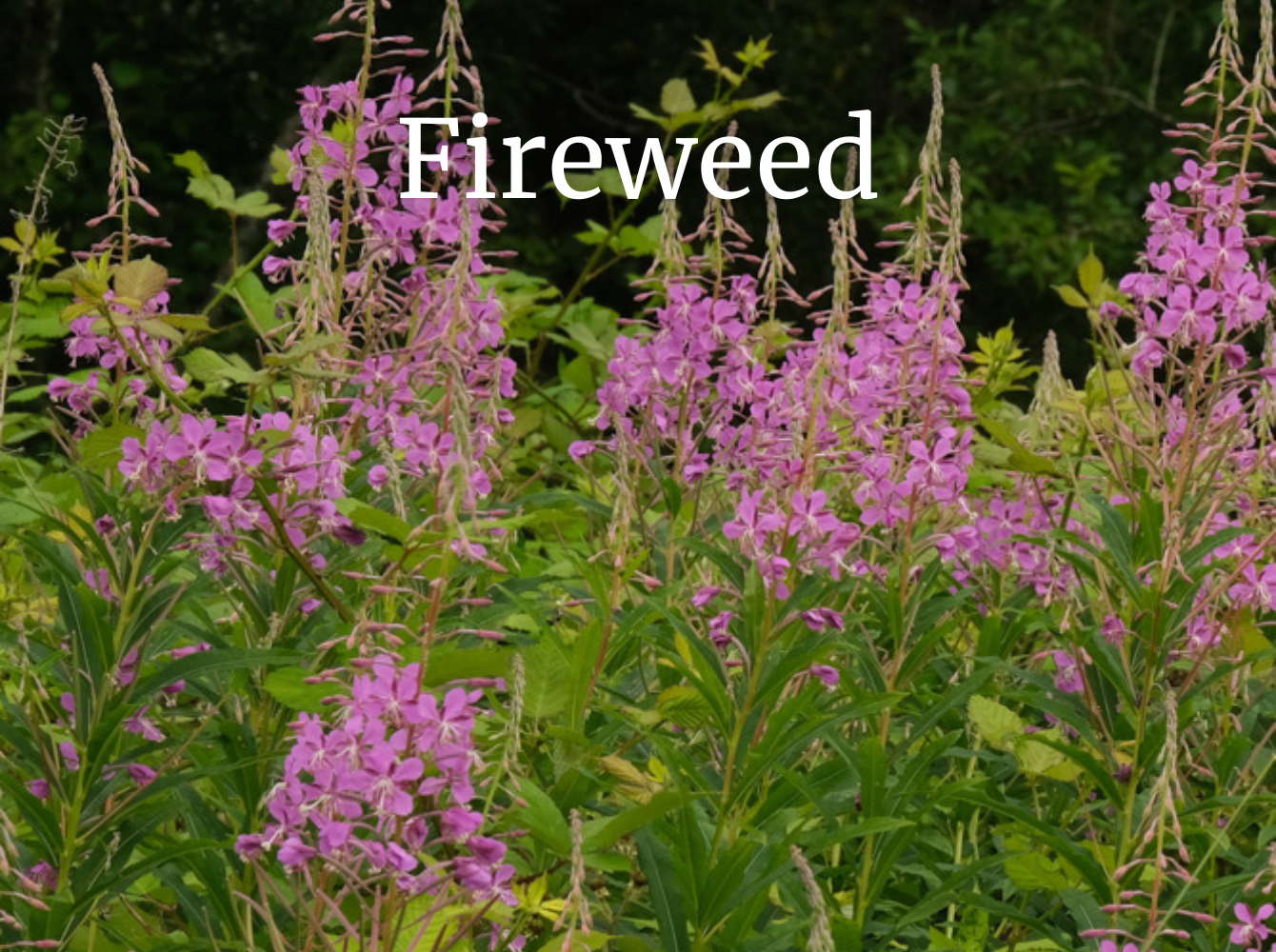Fireweed comes by its name by being one of the first colonizers after a forest fire. Both its ability to spread through rhizomes in the rich soil left after a fire and its ability to send wind dispersed seeds sailing on the breeze makes it an efficient spreader. Fireweed likes disturbed ground, so you might also come across it in logged areas or along roadsides. Modern activity may have actually expanded the range of this plant.
This flower occurs in northern climates throughout the world, and it tolerates a broad spectrum of climatic conditions. The flowers of fireweed are a deep pink and have long pedicels (little stems that attach the individual flower to an inflorescence). They start blooming from the bottom up, and each flower lasts about 2 days. This seems like a pretty clever plant adaptation to spread out its chances of pollination over a long period of time. Blackfoot people traditionally rubbed flowers on mittens and rawhide thongs as a waterproofing agent.
The leaves are willow-like, and this gives the plant its other common name: Great Willowherb. The leaves are generally arranged in an alternate pattern, but the lower leaves are often opposite. They're 4-8 inches long, deep green above and paler beneath, and have conspicuous veins on the lower surface. The leafy stems were traditionally used as matting in root cooking pits to keep the dirt off of the food.
The seeds of fireweed have a tuft of fine white hair, and Puget Sound people who wove mountain goat wool blankets would use the fluff to fill out their supply of wool. This fluff could also be used as tinder when starting fires.
Fireweed is edible, and the plant was sought out in the springtime for its sweet inner pith that tastes somewhat like cucumbers. French trappers boiled or steamed the stems and served them like asparagus, and the flowers unopened buds can be pickled like capers. The plant contains 4x's the vitamin C of oranges, and in Russia a tea was made of the leaves (which may have a laxative effect, just so you're warned). Tastiest of all, in Greenland the leaves were combined with seal blubber for a spicy treat. Yum?






